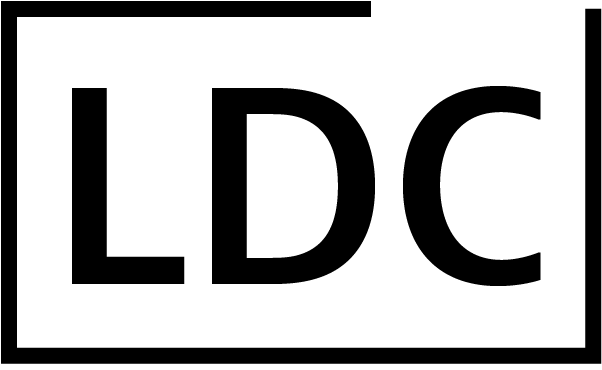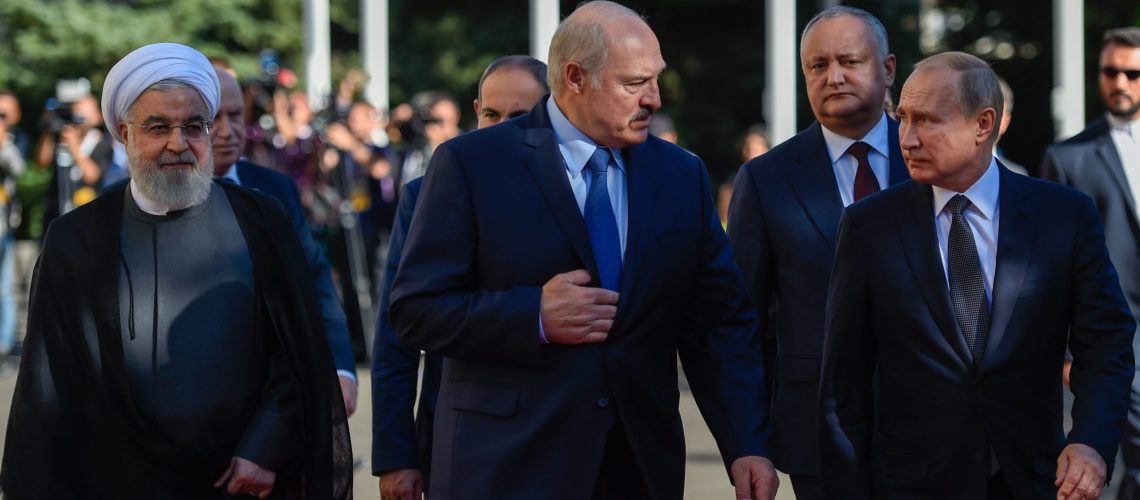In April 2024, NATO Secretary General Jens Stoltenberg warned that an ‘alliance of authoritarian powers’ is working against Western democracies. Stoltenberg singled out China, Russia, Iran and North Korea as the countries forming this anti-Western alliance, noting that ‘China is propping up the Russian war economy, delivering key parts to the defence industry, and in return, Moscow is mortgaging its future to Beijing’.
Marking the Alliance’s 75th anniversary, the NATO chief was issuing a stark notice to Western leaders about hostile regimes working in combination in a more violent and unpredictable world. Calls to increase NATO contributions rumble on, yet a more existential hurdle to overcome will be how the Alliance and its partners can respond to the new challenges through building on one of their key advantages: cohesion in deterrence.
This paper takes stock of the implications of emerging geopolitical blocs and considers how Washington is reacting to the growing threat from authoritarian regimes, particularly through minilateral vehicles and integrated deterrence.
The unravelling of the world order
US Secretary of State Anthony Blinken warned in October that the world is at an ‘inflection point’, with the post-Cold War era coming to an end: ‘We have an intense competition that’s underway to actually shape what comes next’. This notion of an inflection point – coinciding with the biggest election year in history – is characterised by sharpening rivalry between the US and its key adversaries China and Russia, and the reemergence of geopolitical blocs.
Less tangible than the Western and Eastern blocs of the Cold War, and less ideological, a geopolitical fault line is nonetheless beginning to emerge between an autocratic Eurasian bloc, forged in the uneasy partnership between Beijing and Moscow in the context of Ukraine, and a renewed albeit diminished Western bloc, still led by Washington.
But there is a third bloc at work, albeit far less defined: that of ‘swing states’, which mostly hail from the fast-growing economies of the developing world and are not bound to any particular hegemon. This bloc may wield decisive power.
These geopolitical blocs are far removed from the Orwellian notion of three superstates in Oceania, Eurasia and Eastasia. There is no uniformity or monolithic decision-making within these blocs and they are highly porous.
Nevertheless, heightened strategic competition makes the world increasingly unstable and unpredictable. Indeed, the touchpoints of today – Russia’s illegal invasion of Ukraine, the rekindling of the century-long Middle East conflict, and ongoing skirmishes in the South China Sea – are all spawned from the jostling for power between this new lineup of actors. Yet the struggle not only concerns competition for capabilities and resources but a more fundamental battle over values, norms and legitimacy.
A (diminished) fortress West
The most tangible bloc of the three is the West, albeit diminished from its previous heyday. Notwithstanding the odd diplomatic wrangle between Western states, the US remains its undisputed hegemon, a function of still having – by some way – the world’s largest economy and highest defence budget.
Inheriting from Trump a sense of frustration over attempts by adversaries to challenge American primacy, the Biden administration has set about ‘updating’ alliances through order-engineering, in an attempt to make the world order more favourable to US interests. It recognises, however, that it is no longer able to meet the challenges alone, and will need to rely on partnerships to achieve global objectives.
As a result, Washington is developing an architecture of security and economic minilateral partnerships with their nexus in the Indo-Pacific. Most prominent of these is AUKUS, a trilateral security pact between the US, Australia and the UK, widely understood to be designed to curb China’s military ambitions; other Indo-Pacific-focused initiatives include the Quad, Build Back Better World, GCAP, and the Indo-Pacific Economic Framework for Prosperity.
Despite the increasing and more diverse set of threats from adversaries, the West continues to hold sway as the most powerful bloc, which appears to refute strategic scenarios that suggest great powers will either go to war or will seek to find a manageable way to ‘share’ the 21st century.
Above all, the West enjoys a relatively high degree of cohesion and stability, thanks to a shared history and its enduring adherence to rules, norms and legitimacy. However, with the possibility of Trump returning to the White House next year, there is a risk yet that America will descend into illiberalism and quasi-isolationism, at the expense of a united West.
A (fragmented) autocratic Eurasia
China and Russia’s ‘no limits’ friendship, announced just before the Ukraine invasion, forms the basis of the Eurasia bloc. Other members include Pakistan, Iran and North Korea, while initiatives such as the Shanghai Cooperation Organisation potentially contribute to the making of a more formalised bloc.
In April 2024, Washington and the European Union both issued warnings about China supplying dual-use components to Russia that could be used to produce weapons, amid signs Beijing is seeking to take a more assertive role in the two-year long war.
As noted by Stoltenberg, there is a symbiotic dynamic between the duo in their shared goal of pitting Eurasian autocracies against Western democracies. Of immediate concern, the supply of Chinese military technology threatens to prolong the war in Ukraine.
Nevertheless, the Eurasian bloc at its heart is an opportunistic grouping forged through the constellation of immediate strategic interests which is likely to prevent it from becoming a cohesive entity with a long-term strategy.
Meanwhile, its presumptive leader China is confronting various domestic challenges that may yet threaten Beijing’s superpower future – including stalled economic reforms, an ageing population, a wealth gap, and unbalanced regional development. Beijing has also desisted from assuming a leadership role when international controversies inevitably emerge.
Autonomous swing states
The third bloc is that of swing states, most often associated with those countries of Asia, Africa and Latin America experiencing fast economic growth. After years of neglect, swing states are now being courted by the great powers, including through China’s Belt and Road Initiative and Russia’s political inroads on the African continent.
Although swing states do not tend to see themselves as part of any bloc, their power is materialising within economic forums like the BRICS, the intergovernmental organisation of top emerging economies founded by Brazil, Russia, India, and China, and later joined by South Africa.
Now that 40 more countries have expressed interest in joining BRICs (which already accounts for a quarter of the global economy and more than 40% of the world population), they may yet prove to be a highly influential force. Indeed, with the principle of non-interference being highly valued as a result of their historical – often colonial – experiences, swing states are developing greater agency than ever before in setting the rules of the international system.
The upper hand in deterrence
It is premature to think of the three blocs as coherent geopolitical entities or even poles. And most swing states would baulk at the suggestion they are part of any aligned grouping. Still, their newfound agency suggests they could emerge as kingmaker should fortress West and autocratic Eurasia vie for their patronage, salient in the strategic race for rare earth elements.
In terms of material capabilities alone, the Asian continent will emerge as a leading force thanks to its economic strength, fast-growing populations, abundant natural resources, and emerging technology proficiency. However, putting the brakes on Eurasian primacy is China’s lack of leadership in global affairs combined with the absence of political cohesion between Eurasian states.
Responding to the geopolitical flashpoints of today, the West is increasingly coherent and integrated as a bloc. Indeed, NATO is undergoing a renaissance as a result of Ukraine, with an increase in defence contributions and the addition of new members. The West also retains a monopoly over global flows of capital, technology and military resources, while its adherence to rules and norms are indispensable for legitimising claims to global stewardship.
In 2022, Washington released three documents that put ‘integrated deterrence’ at the cornerstone of US strategy to deter China and other adversaries: the National Security Strategy (NSS), the Nuclear Posture Review and the Missile Defence Review. This refers to the integration of ‘all tools of national power with the robust network of allies and partners that the U.S. has to credibly deter aggression’. The NSS in particular acknowledged that ‘alliances and partnerships around the world are our most important strategic asset’.
Integrated deterrence presents a compelling vision – and after all deterrence inhabits psychological spaces – of the world’s democracies acting cohesively.
However, in reality integrated deterrence is merely an exploratory concept and it remains to be seen how this will be implemented in practice. Some states in the Washington orbit have a history of working together in military theatres – the US and the UK being the obvious contenders – but it’s unclear what could be achieved in any practical way beyond NATO. This creates a real risk that integrated deterrence will not be taken seriously by the adversaries to which it is directed, rendering it meaningless.
Integrated deterrence is also about good leadership. Although authoritarian regimes working together is a grave concern, the real threat to Western primacy may come from American democracy being undermined by domestic far-right elements, materialising in a second Trump term.
As Stoltenberg said, the US would continue to represent the West’s most capable ally whoever is in charge. Still Western cohesion is the glue that holds integrated deterrence together. At this inflection point, more strategic thinking is needed to make deterrence useful.
Dr Sarah Tzinieris is a Research Fellow at the Department of War Studies at King’s College London.
Dr Zeno Leoni is a Lecturer at the Defence Studies Department at King’s College London.

